הנה רשימת 25 הסנטרים הגדולים בהסטוריה. ניתן להתווכח על מיקומו של סנטר זה או אחר, אך בגדול הרשימה נראית די הגיונית, ומה שבטוח הגיוני ונכון בה היא העובדה שרק דווייט האווארד מהסנטרים של היום ניכנסו לרשימה.
התזונה טובה יותר היום, האוכלוסייה גדולה, גבוהה, ובריאה יותר, אז לאן נעלמו הסנטרים?
לי ישנה דיעה משלי ואביע אותה בפוסט מחר או מחרתיים אחרי שאקרא את דיוני הגולשים ואשמע מה יש לכם לומר בנידון.
אז אנשי צוות וגולשים יקרים, כיצד אתם מסבירים את העובדה שאין היום סנטרים יוצאים מין הכלל יותר, כפי שהיו בעבר. ז"א ש-"הסנטר נעלם ממרכז העניינים". למה ומדוע?
The 25 Greatest Centers in NBA History

When normally thinking of a center in the NBA, two distinctly different images often come to mind: either a lanky, uncoordinated oaf (thinkHasheem Thabeet or Shawn Bradley), or someone who completely dominates all aspects of the game (perhaps Wilt Chamberlain orShaquille O’Neal). While most centers exist somewhere somewhere in the middle, there is no doubting that the position has played a pivotal role in shaping NBA basketball throughout the game’s history.
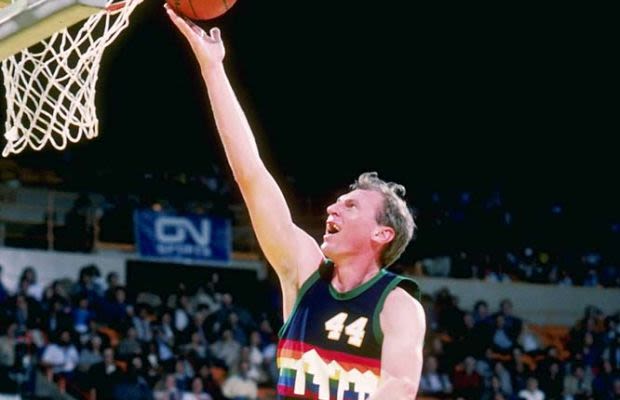
25. Dan Issel
Career years: 1970-1985
Team(s): Kentucky Colonels, Denver Nuggets
Stats: 1,218 G, 22.6 PPG, 9.1 RPG, 2.4 APG, 1.0 SPG, 0.5 BPG
Accolades: 1x NBA All-Star
Dubbed "the Horse" due to his durability (he only missed 24 games during his 15-year career), Dan Issel was hugely valuable to both the Colonels in his ABA days as well as the Nuggets. An All-Star in each of his six ABA seasons, he continued his incredibly reliable 20-10 output-or close to it-every single season he was in the NBA, only tailing off in his final year or two as his minutes started to dwindle. At the time of his retirement in 1985, his 27,000-plus career points ranked him behind only Kareem Abdul-Jabbar, Wilt Chamberlain, Julius Erving, and Moses Malone on the all-time ABA/NBA combined scoring list.
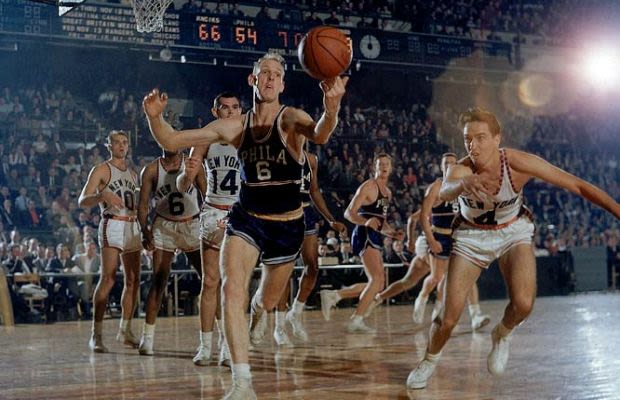
24. Neil Johnston
Career years: 1951-1959
Team(s): Philadelphia Warriors
Stats: 516 G, 19.4 PPG, 11.3 RPG, 2.5 APG
Accolades: 1x NBA Champion, 6x NBA All-Star, 4x All-NBA First Team, 1x All-NBA Second Team
Neil Johnston was a dominant player for the Philadelphia Warriors in the 1950s, racking up great individual numbers on the strength of his signature sweeping hook shot. Standing at 6' 8", he dwarfed many players of that era and was able to win three consecutive scoring titles from 1953 to 1955. That last scoring title also came the same year as Johnston led the league in rebounding, a feat that has only been matched by two others in NBA history (Bob Pettit and Wilt Chamberlain). A knee injury ended Johnston's career in 1959 when he was just 29 years old, and one would think that with the benefit of more modern medicine he would have been able to continue his streak of dominance into the Russell-Chamberlain era.

23. Alonzo Mourning
Career years: 1992-2008
Team(s): Charlotte Hornets, Miami Heat, New Jersey Nets, Miami Heat
Stats: 838 G, 17.1 PPG, 8.5 RPG, 1.1 APG, 0.5 SPG, 2.8 BPG
Accolades: 1x NBA Champion, 7x NBA All-Star, 1x All-NBA First Team, 1x All-NBA Second Team, 2x NBA Defensive Player of the Year, 2x NBA All-Defensive First Team, 1993 NBA All-Rookie First Team
If only Alonzo Mourning and Larry Johnson could have gotten along, the Hornets might well have been able to challenge the Chicago Bulls during the mid-90s. Instead, the defensively dominant Mourning was shipped to Miami after just three seasons in Charlotte and established himself as one of the era's best centers with the Heat. A reliable 20-10 guy pretty much every night, he was betrayed by his own body as he was diagnosed with focal segmental glomerulosclerosis (a kidney disease) before the 2000-01 season and was only able to play 13 games all year. Despite a decent comeback effort in 2001-02, he again suffered a setback and was forced to sit all of 2002-03 and most of 2003-04 after receiving a kidney transplant. Ah, what might have been.
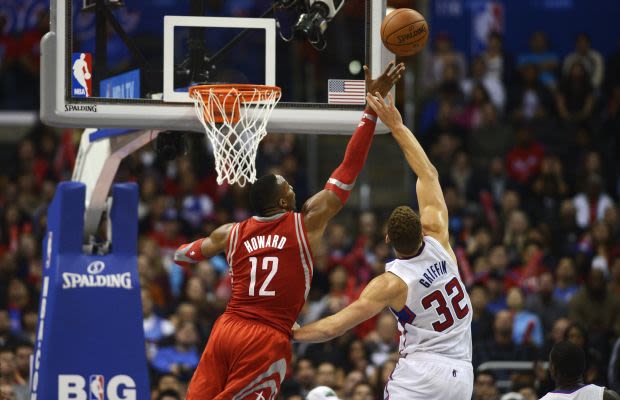
22. Dwight Howard
Career years: 2004-Present
Team(s): Orlando Magic, Los Angeles Lakers, Houston Rockets
Stats: 755 G, 18.3 PPG, 12.9 RPG, 1.5 APG, 1.0 SPG, 2.2 BPG
Accolades: 8x NBA All-Star, 5x All-NBA First Team, 2x All-NBA Third Team, 3x NBA Defensive Player of the Year, 4x NBA All-Defensive First Team, 1x NBA All-Defensive Second Team, 2005 NBA All-Rookie First Team
Given how his off-court shenanigans have impacted public perception of him, Dwight Howard may very well have become underrated as a player this year. He just turned 28 years old, but already has won five rebounding titles (the fourth-most in NBA history) and is one of ten players to average 18-plus points and 12-plus rebounds per game over his first 10 seasons in the league, and is the first to do it since Hakeem Olajuwon. With a talented running mate in James Harden and finally secure in Houston, Howard figures to remain productive for many years to come and should only see himself continue to rise on this list.
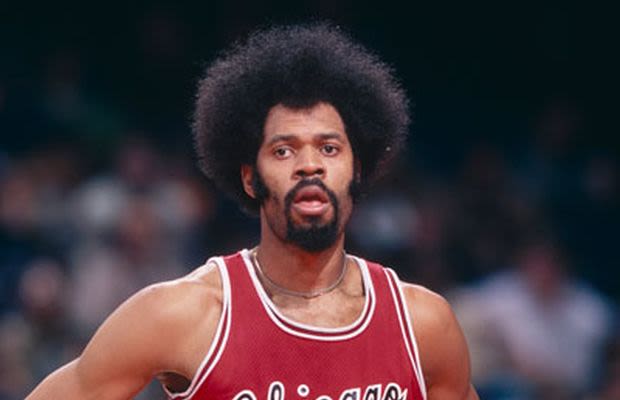
21. Artis Gilmore
Career years: 1971-1989
Team(s): Kentucky Colonels, Chicago Bulls, San Antonio Spurs, Chicago Bulls, Boston Celtics
Stats: 1,329 G, 18.8 PPG, 12.3 RPG, 2.3 APG, 0.6 SPG, 2.4 BPG
Accolades: Basketball Hall of Famer, 6x NBA All-Star, 1x NBA All-Defensive Second Team
While Artis Gilmore's NBA stats won't blow you away, it's important to remember that he was one of the best players in the ABA and was the No. 1 selection in the dispersal draft when the leagues merged in 1976. He was about as durable as they come, rattling off a streak of 670 consecutive games played and using his incredible size (7' 2") and strength to intimidate anyone who would come into the paint. He was an All-Star during all five of his ABA seasons and was the league's MVP in 1972 (his rookie year), but it's not as if he peaked in the other league; Gilmore's .599 career field goal percentage in the NBA remains the best of all-time. So basically, he was Roy Hibbert except he also happened to be the most accurate shooter in history. Not bad at all.
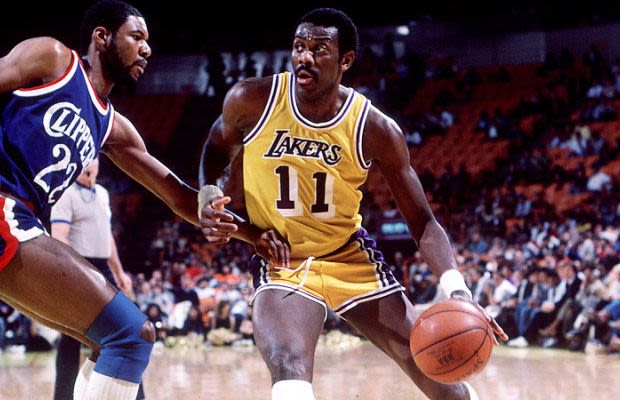
20. Bob McAdoo
Career years: 1972-1993
Team(s): Buffalo Braves, New York Knicks, Boston Celtics, Detroit Pistons, New Jersey Nets, Los Angeles Lakers, Philadelphia 76ers
Stats: 852 G, 22.1 PPG, 9.4 RPG, 2.3 APG, 1.0 SPG, 1.5 BPG
Accolades: Basketball Hall of Famer, 2x NBA Champion, 1x NBA MVP, 5x NBA All-Star, 1x All-NBA First Team, 1x All-NBA Second Team, 1973 NBA Rookie of the Year, 1973 NBA All-Rookie First Team
Bob McAdoo had one of the more confusing careers in NBA history. It started out about as well as could be imagined, with the big man following up his Rookie of the Year campaign with three consecutive scoring titles and an MVP award. Only nine players in history have averaged 30-plus points and 10-plus rebounds in a season, and Wilt Chamberlain is the only one to accomplish it more times than McAdoo. After that brilliant start, though, his numbers (and health) began to deteriorate as McAdoo bounced around from mediocre team to mediocre team, until he finally found a home as the sixth man for the Showtime Lakers. He even finished his career with five years of Italian ball, finally retiring at age 42.
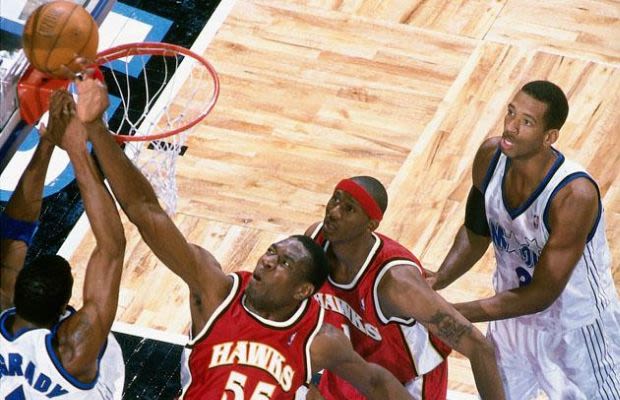
19. Dikembe Mutombo
Career years: 1991-2009
Team(s): Denver Nuggets, Atlanta Hawks, Philadelphia 76ers, New Jersey Nets, New York Knicks, Houston Rockets
Stats: 1196 G, 9.8 PPG, 10.3 RPG, 1.0 APG, 0.4 SPG, 2.8 BPG
Accolades: 8x NBA All-Star, 1x All-NBA Second Team, 2x All-NBA Third Team, 4x NBA Defensive Player of the Year, 3x NBA All-Defensive First Team, 3x NBA All-Defensive Second Team, 1992 NBA All-Rookie First Team
The master of the finger wag, Dikembe Mutombo will forever be known as one of the greatest shot blockers in NBA history. His imposing presence in the paint earned him respect around the league, and he remains one of only two players to win Defensive Player of the Year four different times since the award was created in 1982-83. His freakishly long arms also made Mutombo incredibly effective around the basket, as he corralled rebounds with ease and scored 10-plus points per game in each of the first 11 seasons of his career. Since blocks became a recorded stat, Mutombo is one of just three players (along with Hakeem Olajuwon and David Robinson) to record six or more individual seasons with averages of at least 10 points, 10 rebounds, and three blocks per game.
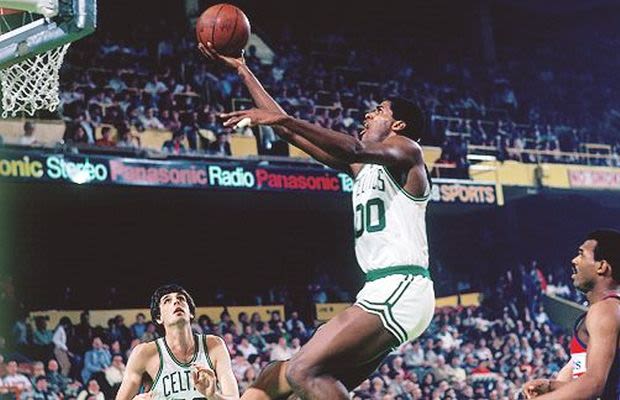
18. Robert Parish
Career years: 1976-1997
Team(s): Golden State Warriors, Boston Celtics, Charlotte Hornets, Chicago Bulls
Stats: 1611 G, 14.5 PPG, 9.1 RPG, 1.4 APG, 0.8 SPG, 1.5 BPG
Accolades: Basketball Hall of Famer, 4x NBA Champion, 9x NBA All-Star, 1x All-NBA Second Team, 1x All-NBA Third Team
"The Chief" Robert Parish was often the unsung hero in the Boston Celtics' Big Three, less heralded and beloved than Larry Bird and Kevin McHale but certainly no less important to the team's success. Indeed, Parish's durability played a huge role in the team's championship-contending run throughout the 1980s; because Parish never played fewer than 74 games in a season during his 14 years in Boston, many younger Celtics fans remember his playing days much more clearly than Bird or McHale. Parish's performance was incredibly steady during those years as well, as he averaged 18.9 points and 9.5 rebounds per game as a 27-year-old with the Celtics and still put up a highly respectable 11.7 points and 7.3 rebounds a night at age 40. He even snuck one last ring in before retirement, riding the bench for the 1997 Bulls at the age of 43.
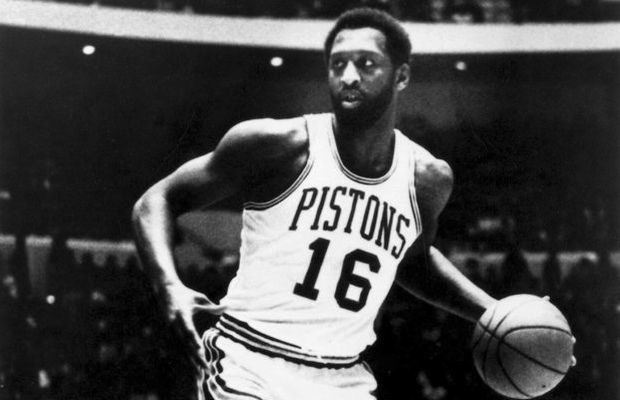
17. Bob Lanier
Career years: 1970-1984
Team(s): Detroit Pistons, Milwaukee Bucks
Stats: 959 G, 20.1 PPG, 10.1 RPG, 3.1 APG, 1.1 SPG, 1.5 BPG
Accolades: Basketball Hall of Famer, 8x NBA All-Star, 1971 NBA All-Rookie First Team
It's kind of weird, but one of Bob Lanier's biggest NBA legacies is the fact that he had monstrous feet. You can still go to the Hall of Fame and compare your foot against his size 22. But Lanier was more than just a huge a set of paws; he was one of the steadiest performers among big men in the 1970s and early 1980s, a tenacious rebounder whose deft hook shot and smooth mid-range game made him a threat all over the court. The biggest blemish on his resumé is the fact that he never played in an NBA Finals, something he freely discussed during his career.
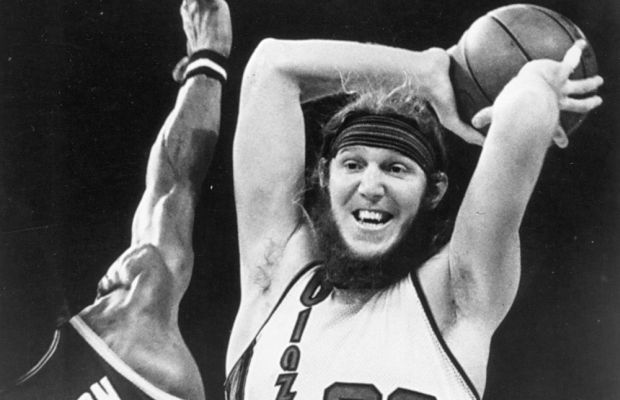
16. Bill Walton
Career years: 1974-1987
Team(s): Portland Trail Blazers, San Diego/Los Angeles Clippers, Boston Celtics
Stats: 468 G, 13.3 PPG, 10.5 RPG, 3.4 APG, 0.8 SPG, 2.2 BPG
Accolades: Basketball Hall of Famer, 2x NBA Champion, 1x NBA MVP, 2x NBA All-Star, 1x All-NBA First Team, 1x All-NBA Second Team, 2x NBA All-Defensive First Team, 1x NBA Sixth Man of the Year
One of the great what-ifs in NBA history, Bill Walton by all means would have ended up higher on this list, but for a rash of injuries that marred his Hall of Fame career. After missing the playoffs as he battled injury in each of his first two years in the league, a healthy Walton led the Trail Blazers to the title in his third NBA season on the strength of his interior play as he led the league in both blocks and rebounds per game, participating in 65 games (the most he'd ever play in a season for Portland). He broke his foot during his MVP-winning campaign the following year, and it was all downhill from there as Walton would miss three full seasons with injuries and finally retire for good in 1987.
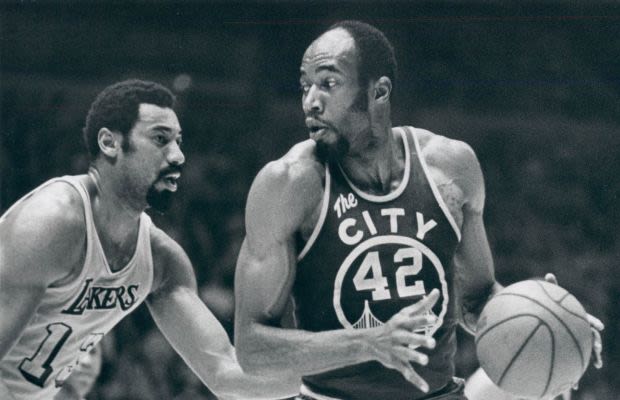
15. Nate Thurmond
Career years: 1963-1977
Team(s): San Francisco/Golden State Warriors, Chicago Bulls, Cleveland Cavaliers
Stats: 964 G, 15.0 PPG, 15.0 RPG, 2.7 APG, 0.5 SPG, 2.1 BPG
Accolades: Basketball Hall of Famer, 7x NBA All-Star, 2x NBA All-Defensive First Team, 3x NBA All-Defensive Second Team, 1964 NBA All-Rookie First Team
If you think for a second that Nate Thurmond couldn't bang in the low post in today's NBA, we just say: look at that picture. You think that dude is strong enough? Thurmond was an absolute beast down low, posting consecutive seasons averaging over 20 rebounds per game in 1967 and 1968, and also swatting innumerable shots along the way (blocks weren't kept as a statistic until 1973-74, Thurmond's 11th season in the league). He and Wilt Chamberlain remain the only players since 1967 to average at least 20.0 points and 20.0 rebounds per game for an entire season, a mark that will be difficult for modern day players to challenge.

14. Walt Bellamy
Career years: 1961-1974
Team(s): Chicago Packers/Zephyrs, Baltimore Bullets, New York Knicks, Detroit Pistons, Atlanta Hawks, New Orleans Jazz
Stats: 1043 G, 20.1 PPG, 13.7 RPG, 2.4 APG, 0.7 SPG, 0.6 BPG
Accolades: Basketball Hall of Famer, 4x NBA All-Star, 1962 NBA Rookie of the Year
Walt Bellamy started his NBA career with one of the most statistically dominant rookie seasons of all-time, playing 42-plus minutes per game and averaging 31.6 points and 19.0 rebounds a night. While those points and rebounds averages would end up being the best of his career, Bellamy would continue to rack up season after to season of great stats, only to be overshadowed by two guys named Russell and Chamberlain. He also earned a rare record, one that will likely never be equaled: in 1968-69, Bellamy was traded mid-season from the Knicks to this Pistons, and due to scheduling quirks set an NBA record by playing in 88 regular season games.
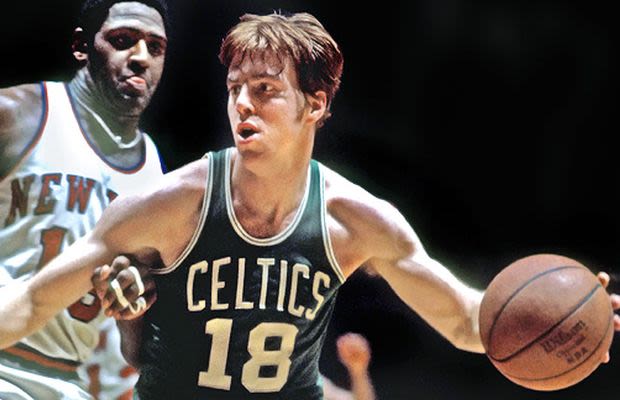
13. Dave Cowens
Career years: 1970-1983
Team(s): Boston Celtics, Milwaukee Bucks
Stats: 766 G, 17.6 PPG, 13.6 RPG, 3.8 APG, 1.1 SPG, 0.9 BPG
Accolades: Basketball Hall of Famer, 2x NBA Champion, 1x NBA MVP, 7x NBA All-Star, 3x All-NBA Second Team, 1x NBA All-Defensive First Team, 2x NBA All-Defensive Second Team, 1971 NBA Rookie of the Year, 1971 NBA All-Rookie First Team
Dave Cowens was adored in Boston right from the start. It probably had something to do with his ability to both put up big stats (he averaged 17.0 points and 15.0 rebounds per game as a rookie) while also playing with the kind of reckless abandon and tenacity adored by Celtics fans (he also led the NBA in fouls as a rookie). His career is remembered just as much for the “now that’s a foul” incident and his headlong dive on the Boston Garden parquet as for his MVP award and two NBA titles. Cowens was even known to dabble in bizarre behavior off the court, too; not only did he spend a night driving a cab in Boston, but he also passed out on a bench in Boston Common after celebrating the Celtics’ 1974 title win with the fans.
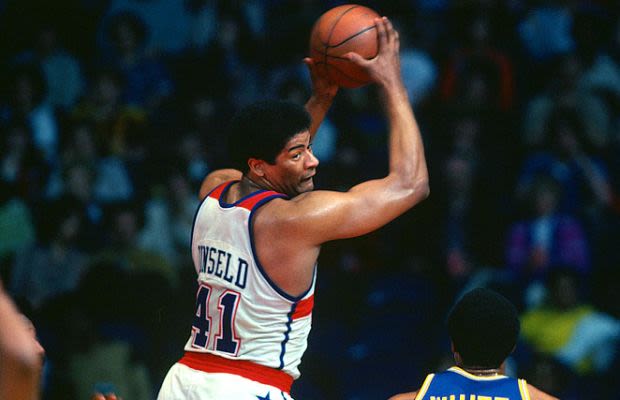
12. Wes Unseld
Career years: 1968-1981
Team(s): Baltimore Bullets
Stats: 984 G, 10.8 PPG, 14.0 RPG, 3.9 APG, 1.1 SPG, 0.6 BPG
Accolades: Basketball Hall of Famer, 1x NBA Champion, 1x NBA Finals MVP, 1x NBA MVP, 5x NBA All-Star, 1x All-NBA First Team, 1969 NBA Rookie of the Year, 1969 NBA All-Rookie First Team
Thanks to Kevin Love, Wes Unseld and his famous outlet passes have come back into the national basketball consciousness, a deserved nod to an all-time great. The round-bodied Unseld was a star from the moment he got into the NBA, becoming just the second rookie in history (along with Wilt Chamberlain) to win MVP. Despite being just 6' 7", Unseld would use his incredible strength on the block to bully bigger players out of the way, failing to average over double-digit rebounds only one season during his career. He remains one of just 15 players in NBA history to play in at least 975 games and average a double-double.

11. Patrick Ewing
Career years: 1985-2002
Team(s): New York Knicks, Seattle SuperSonics, Orlando Magic
Stats: 1183 G, 21.0 PPG, 9.8 RPG, 1.9 APG, 1.0 SPG, 2.4 BPG
Accolades: Basketball Hall of Famer, 11x NBA All-Star, 1x All-NBA First Team, 6x All-NBA Second Team, 3x NBA All-Defensive Second Team, 1986 NBA Rookie of the Year, 1986 NBA All-Rookie First Team
Never winning a ring will always haunt Patrick Ewing, whose career has come to be defined as much by his epic misses as his consistent, often dominant play for the Knicks (we're not counting the Seattle and Orlando years as either "consistent" or "dominant"). Despite his lack of a title, Ewing is still one of the few players ever taken No. 1 who unequivocally lived up to the hype, finishing his career as the Knicks' all-time leader in points scored and games played. He also was the focal point of one of the 1990s' winningest teams, as the Knicks made the playoffs in all but the first two seasons of Ewing's career.
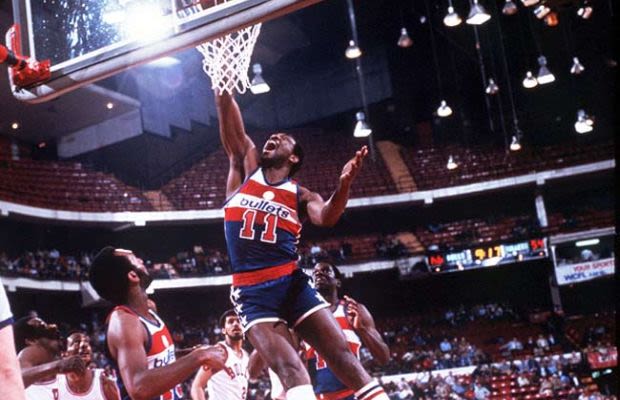
10. Elvin Hayes
Career years: 1968-1984
Team(s): San Diego/Houston Rockets, Baltimore/Washington Bullets, Houston Rockets
Stats: 1,303 G, 21.0 PPG, 12.5 RPG, 1.8 APG, 1.0 SPG, 2.0 BPG
Accolades: Basketball Hall of Famer, 1x NBA Champion, 12x NBA All-Star, 3x All-NBA First Team, 3x All-NBA Second Team, 2x NBA All-Defensive Second Team, 1969 NBA All-Rookie First Team
As we see every year, integrating a rookie into an NBA team can be a painful, sluggish process. It seems like, for most guys, it takes over half a season just to get used to the pace of play and physicality of the NBA. That was definitely not the case with Elvin Hayes, who in 1968-69 became the last rookie to win the NBA scoring title when he did it for the Rockets . He followed that up the next season by becoming the first person not named "Bill Russell" or "Wilt Chamberlain" to lead the league in rebounding in over a decade, and he remains fourth in league history in total career rebounds. He was also exceptionally durable, playing in at least 80 games per season for each of his 16 years in the NBA.
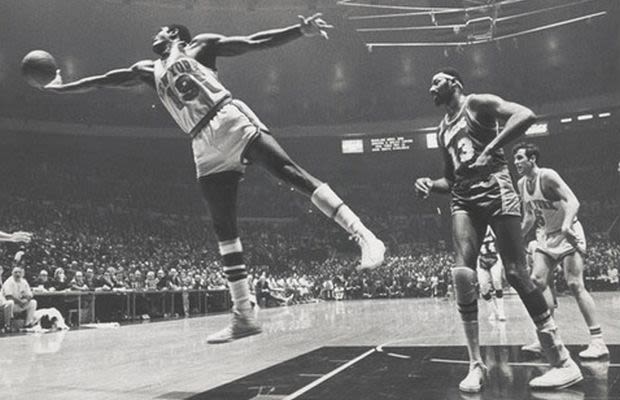
9. Willis Reed
Career years: 1964-1974
Team(s): New York Knicks
Stats: 650 G, 18.7 PPG, 12.9 RPG, 1.8 APG, 0.6 SPG, 1.1 BPG
Accolades: Basketball Hall of Famer, 2x NBA Champion, 2x NBA Finals MVP, 1x NBA MVP, 7x NBA All-Star, 1x All-NBA First Team, 4x All-NBA Second Team, 1x NBA All-Defensive First Team, 1965 NBA Rookie of the Year, 1965 NBA All-Rookie First Team
It's kind of ironic that Willis Reed's signature performance (Game 7 of the 1970 NBA Finals) actually entailed the burly center playing all of five minutes (if that), going 2-for-2 from the field, then sitting out the rest of the game as Walt Frazier guided the Knicks to the title. In a sad way, it is actually a perfect reflection of Reed's career as a whole: moments of brilliance and promise cut short by injury. He was outstanding during his first seven years in the NBA, averaging 20.1 points and 13.8 rebounds per game and making the All-Star team every season, but then things began to unravel in year eight. When he could only muster 19 games played during his tenth season, Reed sadly called it a career at age 31.
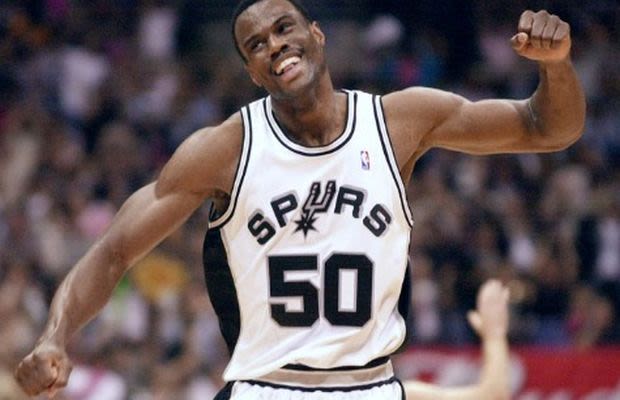
8. David Robinson
Career years: 1989-2003
Team(s): San Antonio Spurs
Stats: 987 G, 21.1 PPG, 10.6 RPG, 2.5 APG, 1.4 SPG, 3.0 BPG
Accolades: Basketball Hall of Famer, 2x NBA Champion, 1x NBA MVP, 10x NBA All-Star, 4x All-NBA First Team, 2x All-NBA Second Team, 4x All-NBA Third Team, 1x NBA Defensive Player of the Year, 4x NBA All-Defensive First Team, 4x NBA All-Defensive Second Team, 1990 NBA Rookie of the Year, 1990 NBA All-Rookie First Team
Everything about David Robinson is impressive. The guy is incredibly smart, a former winner of the NBA's "Sportsmanship Award," and a former MVP who won two rings. Not a bad resumé, especially when you consider that Robinson was also a guy who was considered a choke artist for much of his career. Haters will always counter with "he only won titles once Duncan got there," and while that will always be true, Robinson wasn't exactly blessed with a supporting cast of all-stars prior to Duncan's 1997 arrival. While "the Admiral" did occasionally come up short, he was also blessed with an incredible level athleticism that made him virtually unguardable in the post.
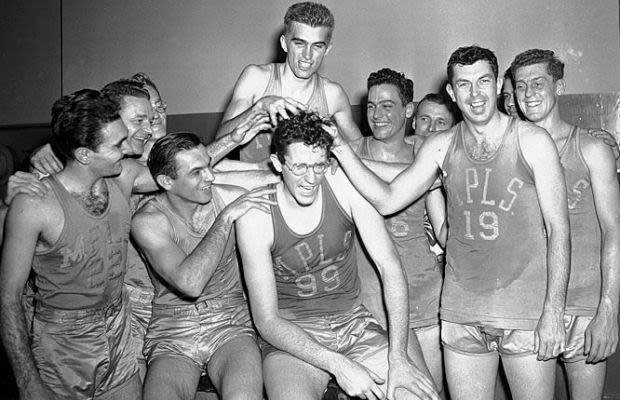
7. George Mikan
Career years: 1946-1956
Team(s): Minneapolis Lakers
Stats: 439 G, 23.1 PPG, 13.4 RPG, 2.8 APG
Accolades: Basketball Hall of Famer, 5x BAA/NBA Champion, 4x NBA All-Star, 6x All-BAA/NBA First Team
If you have a fundamental drill for big men named after you, chances are high that you were a really good player. George Mikan was an absolute behemoth for his time, standing at 6' 10" and weighing in at 245 pounds. What set him apart, however, was that he also possessed a low post game that baffled opponents, as the bespectacled center used both hands to float baby hooks in from all over the paint. He was too good for his competition, which is why the NBA widened the lane (to prevent him from camping out under the rim) and introduced the shot clock (after the Fort Wayne Pistons elected to hold the ball for basically the entire game, leading to a 19-18 final score that is the lowest in NBA history).
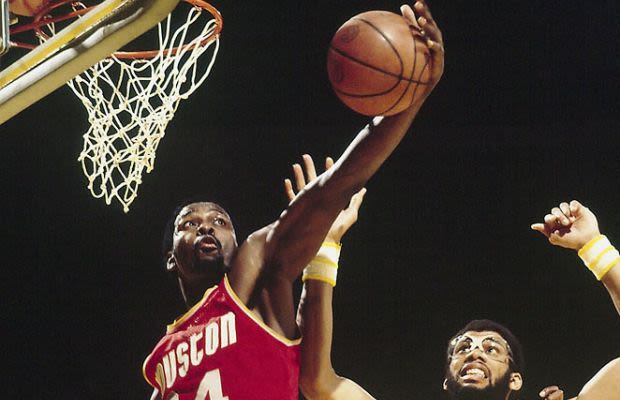
6. Moses Malone
Career years: 1974-1995
Team(s): Utah Stars, Spirits of St. Louis, Buffalo Braves, Houston Rockets, Philadelphia 76ers, Washington Bullets, Atlanta Hawks, Milwaukee Bucks, Philadelphia 76ers, San Antonio Spurs
Stats: 1,455 G, 20.3 PPG, 12.3 RPG, 1.3 APG, 0.8 SPG, 1.3 BPG
Accolades: Basketball Hall of Famer, 1x NBA Champion, 1x NBA Finals MVP, 3x NBA MVP, 12x NBA All-Star, 2x ABA All-Star, 4x All-NBA First Team, 4x All-NBA Second Team, 1x NBA All-Defensive First Team, 1x NBA All-Defensive Second Team
Moses Malone was one of the first "prep to pro" players in basketball history, embarking on a successful two season stint in the ABA before moving over to the NBA following the 1976 merger. From there, he continued a dominant run in which he became one of the most feared rebounders in league history, winning six rebounding titles and averaging over five offensive rebounds per game for his career. He is one of just two players (along with Dennis Rodman) to lead the league in rebounding five seasons in a row, but was also a far more talented offensive player than "the Worm" as Malone put up at least 20 points per game for 11 of his 19 NBA seasons.
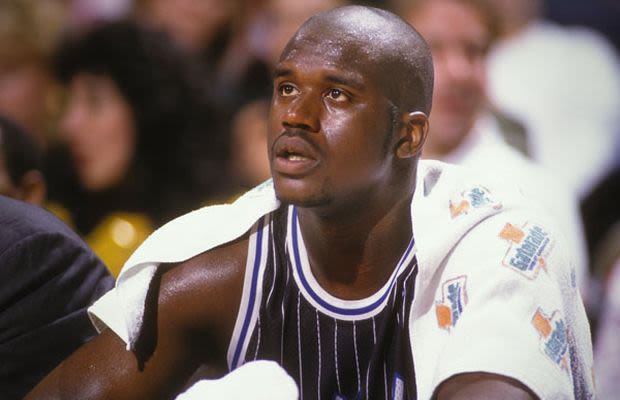
5. Shaquille O'Neal
Career years: 1992-2011
Team(s): Orlando Magic, Los Angeles Lakers, Miami Heat, Phoenix Suns, Cleveland Cavaliers, Boston Celtics
Stats: 1,207 G, 23.7 PPG, 10.9 RPG, 2.5 APG, 0.6 SPG, 2.3 BPG
Accolades: 4x NBA Champion, 3x NBA Finals MVP, 1x NBA MVP, 15x NBA All-Star, 8x All-NBA First Team, 2x All-NBA Second Team, 4x All-NBA Third Team, 3x NBA All-Defensive Second Team, 1993 NBA Rookie of the Year, 1993 NBA All-Rookie First Team
The birthday boy clocks in at No. 5, but anyone who watched a young Shaquille O'Neal destroy backboards and take down Jordan and the Bulls in the playoffs would say that the Diesel could have been more. It remains one of the most astonishing aspects of his career that O'Neal only took home one MVP award in his 19 years in the NBA despite his unmatched dominance in the low post. He averaged at least 20 points per game during each of his first 14 seasons in the league, winning two scoring titles and finishing second on the NBA's all-time field goal percentage list. Not bad for a career some might term a "disappointment."

4. Hakeem Olajuwon
Career years: 1984-2002
Team(s): Houston Rockets, Toronto Raptors
Stats: 1238 G, 21.8 PPG, 11.1 RPG, 2.5 APG, 1.7 SPG, 3.1 BPG
Accolades: Basketball Hall of Famer, 2x NBA Champion, 2x NBA Finals MVP, 1x NBA MVP, 12x NBA All-Star, 6x All-NBA First Team, 3x All-NBA Second Team, 3x All-NBA Third Team, 2x NBA Defensive Player of the Year, 5x NBA All-Defensive First Team, 4x NBA All-Defensive Second Team, 1985 NBA All-Rookie Team
We may never see another player like Hakeem Olajuwon. After not picking up a basketball until age 15, Olajuwon used the soccer skills he developed playing goalkeeper in his native Nigeria to become the most nimble big man ever to occupy the low post. He had the kind of agility that few guards possess, let alone big men, and his signature "Dream Shake" remains one of the most difficult moves to guard in the history of the league. While he reached the pinnacle of his success when Michael Jordan was retired and then working his way back into game shape, Olajuwon nevertheless was the NBA's best player during that period and remains the only player in league history to win the NBA MVP, Defensive Player of the Year, and Finals MVP awards all in the same season.
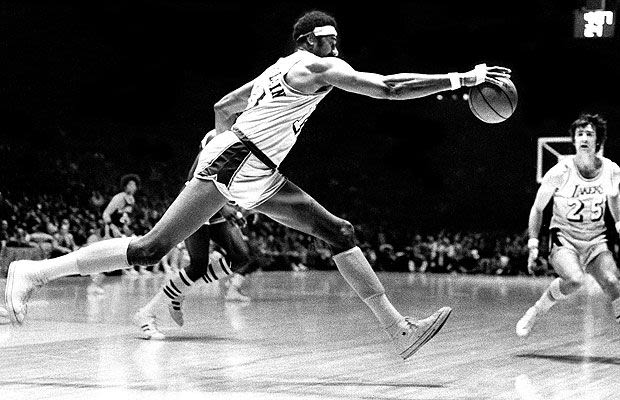
3. Wilt Chamberlain
Career years: 1959-1973
Team(s): Philadelphia/San Francisco Warriors, Philadelphia 76ers, Los Angeles Lakers
Stats: 1045 G, 30.1 PPG, 22.9 RPG, 4.4 APG
Accolades: Basketball Hall of Famer, 2x NBA Champion, 1x NBA Finals MVP, 4x NBA MVP, 13x NBA All-Star, 7x All-NBA First Team, 3x All-NBA Second Team, 2x NBA All-Defensive First Team, 1960 NBA Rookie of the Year
If this list were based on offensive statistics alone, Wilt Chamberlain would almost certainly be No. 1. But he comes in third because of two key blemishes on his resume: his relative indifference when it came to giving maximum effort, and the fact that he won "only" two championships, the second of which came when he was longer "the man" on his team. While almost any player would love to have that as their legacy, for Wilt it earns him only a bronze medal here. While he did put up some amazing stats on the floor (a 100 point game, a season in which he somehow averaged over 48 minutes per game, his absurd 50.4 PPG/25.7 RPG in 1961-62), he is now perhaps best known for his statsoff the court.
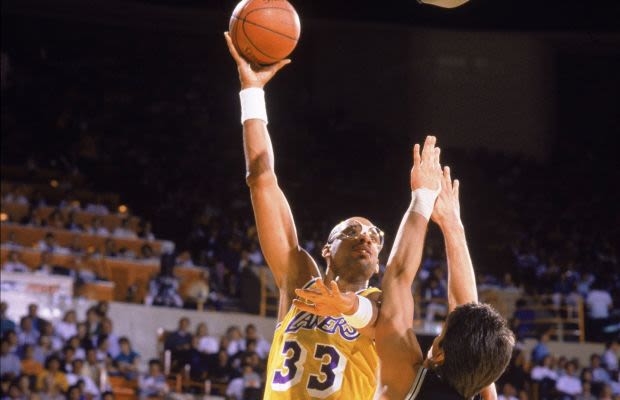
2. Kareem Abdul-Jabbar
Career years: 1969-1989
Team(s): Milwaukee Bucks, Los Angeles Lakers
Stats: 1560 G, 24.6 PPG, 11.2 RPG, 3.6 APG, 0.9 SPG, 2.6 BPG
Accolades: Basketball Hall of Famer, 6x NBA Champion, 2x NBA Finals MVP, 6x NBA MVP, 19x NBA All-Star, 10x All-NBA First Team, 5x All-NBA Second Team, 5x NBA All-Defensive First Team, 6x NBA All-Defensive Second Team, 1970 NBA Rookie of the Year, 1970 NBA All-Rookie Team
Forget centers. Kareem Abdul-Jabbar is one of the greatest basketball players ever, period. The former Lew Alcindor holds several all-time records that will be hard to top; among them, he is the NBA's career leader in minutes played and points scored, reaching an astonishing 18 All-Star games in his 19 professional seasons. So what happened that one year? Kareem broke his hand in the opening game of the season, and did not return to the court until a week before Christmas. With three future Hall of Famers (Artis Gilmore, Bob Lanier, and Bill Walton) also playing center in the West, there simply was no room for Kareem on the All-Star squad despite his 27.0 PPG average in the 29 games he did play before the break.
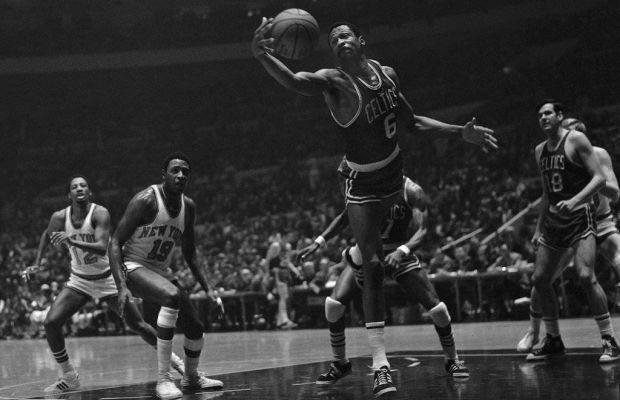
1. Bill Russell
Career years: 1956-1969
Team(s): Boston Celtics
Stats: 963 G, 15.1 PPG, 22.5 RPG, 4.3 APG
Accolades: Basketball Hall of Famer, 11x NBA Champion, 5x NBA MVP, 12x NBA All-Star, 3x All-NBA First Team, 8x All-NBA Second Team, 1x NBA All-Defensive First Team
We can go on and on about Bill Russell, highlighting the things he accomplished on the floor both individually and as the leader of the NBA's most dominant dynasty. But we'd rather let the man himself do it with his perfectly-phrased takedown of LeBron James after James left Russell off of his "Mt. Rushmore" of NBA greats:
"Hey, thank you for leaving me off your Mount Rushmore. I'm glad you did. Basketball is a team game, it's not for individual honors. I won back-to-back state championships in high school, back-to-back NCAA championships in college, I won an NBA championship my first year in the league, an NBA championship in my last year, and nine in between. That, Mr. James, is etched in stone."

זיו
5 אוק 2014 05:49:31מה קאזינס כזה קטן שלא רואים אותו?
תן לו כמה שנים והוא עמוק ברשימה.
ראסל יותר גדול מקארים?
Reignman
5 אוק 2014 12:15:55אתה מצחיק, אפילו מצחיק מאד הייתי אומר. עכבר NBA סולידי היה מעז להמר שקאזינס, אולי ואם ועם עוד 1000 דיסליימרים, אולי יגרד את סוף הרשימה. וזה בזהירות רבה.
אבל אתה, יש לך ביצים – עמוק ברשימה. טוב, נמתין עוד עוד שנים כדי לראות אם יש לו בכלל סיכוי להתקרב, כי בנתיים יש מרחק שנות אור בינו ובין 25 הגדולים.
איתי
5 אוק 2014 05:52:59ראשית אינני מכיר פרט לשם חלק מהסנטרים הוותיקים יותר ברשימה ועיון בנתונים נותן תמונה חלקית ביותר כך שאסמוך על מנחם כמובן בהחלטה מי טוב יותר ממי.
לגבי אז והיום די ברור שסנטר היה חריג בדומיננטיות שלו בגודל ובמאסה ולכן היה לו יתרון משמעותי. כיום יש מאות שחקנים אתלטיים ביותר בגובה 2.05-2.08 שאז היו נחשבים חלקם לסנטרים או פשוט לא היו קיימים.
נושא שני הוא הגובה. אין היום סנטרים ברמה הגבוהה ביותר בגובה 2.15 ומעלה. כולם 2.10 בערך וזה לא מספיק גבוה . קארים ווילט ושאקיל היו גבוהים מאוד. גם ראסל היה גבוה משמעותית לזמנו. היום רק מרק גאסול מהסנטרים מגיע לגבהים האלו.
לגבי הווארד כבר הבעתי את דעתי . הוא לא שווה מקום 50 למרות הסטטיסטיקה. סבוניס היה טוב יותר. גם דיבאץ . היום הייתי מעדיף את מרק גאסול .
המשגיח
5 אוק 2014 18:21:19היברט 2.18
asi
5 אוק 2014 05:58:02חייב להגיד שעם כל הפירגון שלי לאול ארואנד של האקים לא מבין איך הוא מדורג לפני שאקיל. בשיאו היה שני רק לצמברלין
איתי
5 אוק 2014 05:59:47זה כבר וויכוח עקר כי השאלה מה אתה מעדיף את הכח והמאסה של שאקיל או אצת הפינס של חאכים. אישית אין לי מושג איך לדרג את כל החמישייה הראשונה… כולם ענקים
מנחם לס
5 אוק 2014 06:00:12שאלה שלא שייכת אבל מטרידה, ושאלתי את הרב מחב"ד והוא בעצמו ענה "שאלה מעניינית:. אז הנה:
בחלק 'יזכור' של הסידור, מדובר על המתים, ועל שאלהים עמנו ולכן לא נחשוש ממה שיהיה כי מתו לפנינו וימותו אחרינו, ופתאום, OUT OF THE BLUE, כתוב:
"רבי טרפון היה אומר: היום קצר, המלאכה מרובה, השכר נמוך…(וכו'). ומיד אחרי המשפט הזה הסידור חוזר לדברים הקשורים ל-"יזכור".
מה עניין שמיטה להר סיני? למה באמצע הקינות פתאום רבי טרפון מדבר על היום הקצר, העבודה הרבה, והבוס כועס והשכר נמוך…???
האם למישהו יש מושג?
ת'אנדר
5 אוק 2014 12:40:46"רבי טרפון אומר:
היום קצר, והמלאכה מרובה, והפועלים עצלים, והשכר הרבה, ובעל הבית דוחק."
זהו משל על החיים שלנו.
היום קצר = יחסית לזמן (אין אחרי המוות זמן אבל בשביל ההבנה) שאחרי המוות חיינו בעולם הזה מאוד קצרים.
המלאכה מרובה = צריכים בחיינו הקצרים להספיק לעשות כמה שיותר מעשים טובים/מצוות/רצון ה'.
הפועלים עצלים = בני האדם לא מבינים עד כמה חייהם בעולם הזה קצרים בהשוואה למה שמחכה להם, ועל כן הם מתעצלים לעשות את מלאכתם החשובה.
השכר הרבה = השכר הוא העולם הבא שכל תענוגות העולם הזה מתגמדות למול רגע אחד בו.
בעל הבית = ה'
מנחם לס
5 אוק 2014 15:29:41בסדר, אבל למה דווקא באמצע עצרת 'יזכור' בסידור?
מנחם לס
5 אוק 2014 15:30:24אה, אולי הבנתי
דדי
5 אוק 2014 15:48:21מנחם – אתה מנסה למצוא הגיון בדת ???
עוד רגע גם תגיד לי שאתה מאמין במה שכתוב שם…
Berch
5 אוק 2014 07:32:20היום בגלל האתלטיות הגבוהה בליגה יתרונו של הסנטר קטן מעט.
שחקן בגובה 1.80 יכול לעשות גג לסנטר….
סנטר "כבד" (כמו שיש הרבה בליגה) הוא כבר לא יעיל כמו פעם.
גם ברשימה הנ"ל רוב הסנטרים היו עילויים אתלטים לזמנם, כאלה שגם ידעו להוריד כדור לרצפה.
אנטוניו דייויס נראה שמאד הולך לכיוון. הוא גם צנוע בניגוד להווארד לדוגמא אז אני מאמין שיגיע למקום טוב ברשימה הבאה
דרור2
5 אוק 2014 08:07:17הכדורסל השתנה – אין היום הרבה שחקנים קלאסיים בעמדות שלהם, רובם הגדול של השחקנים הטובים יודע לשחק לפחות בשתי עמדות. זה נכון גם לגבי הסיורים – סנטר טוב היום צריך לדעת לשים כדור על הרצפה, לקלוע מרחוק ולשמור על גארד בפיקנרול, וזה פחות מתאים לסנטר ים קלאסיים
המשגיח
5 אוק 2014 08:36:181+
דרור2
5 אוק 2014 08:08:02סיורים = סנטרים
איתי עזרא
5 אוק 2014 08:42:49לרוברט פאריש מגיע מקום גבוה יותר.
רועי ויינברג
5 אוק 2014 09:24:10עליית הפאוור פורוורדים הרגה את הסנטרים. אם פעם אולדריג', דאנקן ושות' היו הופכים לסנטרים אגדיים, היום הם מספרי ארבע טהורים. גם הדראפטים המפוצצים בגארדים לא עזרו. שאק היה האמ.וי.פי גמר האחרון ששיחק סנטר-אל תופתעו אם זה יהיה ככה עוד עשור. היחידים שהיו פאוור וסנטר אגדיים והצליחו ביחד זה דאנקן הצעיר ורובינסון המזדקן
רועי ויינברג
5 אוק 2014 09:25:10אה כן-קארים אחד מ-4 השחקנים הגדולים בהיסטוריה, יחד עם בירד ואחרי מג'יק ומייקל. הוא חייב להיות ראשון
ido moria
5 אוק 2014 09:35:04אני שמח שהפרה הקדושה גרמה לך לחשוב ככה, אבלך יש הרבה טיעונים מצויינים לטובת ביל ראסל.
למרות שאני חושב שקארים הוא שחקן ה אן בי איי החשוב ביותר אני מסכים שדווקא וולט היה הסנטר הטוב ביותר. אם אתה לא מאמין תסתכל שוב על המספרים שלו… גם מחוץ למגרש. אחריו יהיה ביל ראסל. תסתכל על המספרים שלו… אחרים קארים שאק האקים ומוזס.
אם וולטון לא היה כזה שביר הוא היה מקבל את המקום של האקים ברשימה שלי.
רון טחן
5 אוק 2014 10:15:58עידו, המספרים שלהם אכן מדהימים, ורוב הסיכויים שאף אחד לא ישחזר אותם, ומכאן עולה השאלה:
כיצד עלינו לשפוט את שחקני העבר? בהשוואה לתקופה בה שיחקו, או בהשוואה לתקופה היותר מודרנית של המשחק?
ido moria
5 אוק 2014 11:23:31לדעתי אתה יכול לשחק רק מי שעולה לשחק מולך…
כל עוד מדובר בממוצעים למשחק המספרים מדברים בעד עצמם. וזה אני אומר אחרי ששחטתי את הפרות של ביל ראסל וווילט 😉
יפת
5 אוק 2014 09:36:51אני מסכים עם דרור2.
אין היום סנטרים קלאסיים, כמו שאין היום רכזים קלאסיים (רוז, ווסטברוק,קיירי, כולם קומבו גארדים, רכזים כמו סטוקטון ונאש כמעט ואין), כולם לומדים לעשות קצת מהכל, ואי אפשר לעשות הכל בצורה אופטימלית.
מנחם, לגבי השאלה שלך, זה משל על החיים, הכוונה היא שהחיים קצרים, יש הרבה מה להספיק, ובני האדם מתעצלים למרות שהשכר בעולם הבא הוא גדול (הציטוט הוא "השכר הרבה", לא "נמוך").
pingpong
5 אוק 2014 18:29:05מה עם פול?
מאוריציו
5 אוק 2014 09:43:36אני מסכים עם מה שנאמר פה על האתלטיות והעלייה בגבהי השחקנים, ורוצה להוסיף:
לדעתי, ככל שחלפו השנים שחקנים נדרשו להציג מגוון גדל והולך של יכולות; אם פעם הספיק להוציא לפועל אספקט אחד או שניים של המשחק בצורה עילאית, היום זה כבר ממש לא מספיק. מובן שלא כל השחקנים היו חד מימדיים, אך ניתן היה להצליח כנראה באחוזים גבוהים יותר (הרגשה אישית).
וכנראה שיש איזשהו גבול לרמת ביצוע של אינדווידואל בגובה 2.15+ למגוון של אספקטים כדורסלניים, שרק מעטים מצליחים להגיע אליו. כך נוצר המצב שסנטרים בגבהים של פעם, שהיום היו נחשבים נמוכים לעמדה, מוכוונים כבר בגילאים צעירים לעמדת הפאוור, וכך נשארים רק החברה המובהקים לעמדת הסנטר.
רבין (2)
5 אוק 2014 09:45:56בכיף מכניס את עידו קוז׳יקרו
אפלטון
5 אוק 2014 11:29:04נראה לי שגם יואינג סבל פה מחוסר פרגון. עם כמה שאהבתי את האדמירל, יואינג היה לא פחות טוב ממנו. (ואת שניהם היה פשוט כיף לראות איך האקים מקרקס).
אם שאק היה משחק בתקופה שלהם הוא היה מדורג נמוך בהרבה ברשימה
ג'ק השף המשפשף
5 אוק 2014 12:36:47טוב בסדר
דדי
5 אוק 2014 15:53:41איזה שטויות.
יואינג לא התקרב לקרסוליים של רובינסון.
ושאקיל הגיע לליגה כשיואינג ורובינסון היו בשיאם – ועדיין אכל את שניהם לארוחת בוקר בלי מלח בתור שחקן צעיר שהיה רחוק משיאו הפיזי והכדורסלני.
:אם שאק היה משחק בתקופה שלהם" פחחחחחחחחח
רק האקים היה מספיק טוב כדי להתמודד עם שאקיל הצעיר, ולמזלו לא נאלץ להתמודד עם המפלצת בשיאה.
אפלטון
5 אוק 2014 16:24:05שטויות אתה יודע למי תכתוב דדי.
שאקיל הגיע לליגה כשיואינג היה בן 30 עם ברכיים וגב כואבים, ועדיין עד גיל 34 בערך כל המצ'-אפים ביניהם היו שווים.
גם רובינסון עד שהיה בן 30 לימד את הילד איך צריך לשחק כדורסל.
משנת 95-96 לערך לא היתה לשאק שום תחרות וכלום שיעמוד מולו.
דאנקן היה צעיר מדי, שלושת הגדולים של שנות ה-90 זקנים מדי ושאק נכנס עם כל הרוח והצלצולים בחלל הריק הזה, כמו דווייט הווארד של היום.
השחקן הכי אובר-רייטד בתולדות הליגה.
דדי
5 אוק 2014 16:43:04שטויות אני כותב לכל מי שאומר שטויות, ובמקרה שלך זה פשוט קורה קצת יותר מkאחרים…
uכולם יודעים שכשאני כותב לך שטויות – אז אמרת שטויות.
אבל אל תיתן לזה להפריע לך להמציא הסטוריה חדשה שבה יואינג בגיל 30 הוא עם ברכיים וגב כואבים ולא בשיאו כמו כל הסנטרים הגדולים…
שאקיל עשה ממנו קציצות באופן קבוע.
ורובינסון ?
פחחחחח לשאקיל היתה מוטיבציה מיוחדת נגדו כי הוא שיחק בתיכון בסאן אנטוניו.
הוא היה משמיד את רובינסון פעם אחר פעם במאצ'אפים ביניהם – למרות ששאקיל היה ילד ורובינסון בשיאו.
אפלטון
5 אוק 2014 17:06:42דדי את חוסר היכולת שלך לנהל דיון כולם כבר מכירים, אני הפסקתי להתרגש מזה. גם מהשקרים שלך. עכשיו לך להשוואות בין השחקנים ותראה ששאק ויואינג נתנו תפוקות כמעט זהות עד שיואינג הגיע לגיל 34 בערך. עם רובינסון גם המצ'אפים היו שווים בערך עד 95-96 ומשם שאק באמת התעלל בו. כך או כך בין יואינג לרובינסון לא בטוח שהייתי לוקח את רובינסון. יואינג אם כבר היה אחד האנדר-רייטד הגדולים לצערנו שיחק בתקופת ג'ורדן ואולג'ואן
אפלטון
5 אוק 2014 17:07:42לצערו כמובן. ולצער אוהדי הניקס.
נתן
5 אוק 2014 19:52:20את שאקיל ב7 השנים הראשונות באורלנדו כל מאמן הצליח לעצור מתי שהיה צריך. לקח לו זמן להתפתח ובגדול לא התמודד באופן מוצלח עם הסנטרים הגדולים של שנות ה 90
דוד משה
5 אוק 2014 20:48:53בגלל זה שאני אומר שקובי והלייקרס הם אוברייטד. הם הצליחו בתקופה שהnba הייתה בשפל עד דראפט 2003 והלאה.
Mbk
5 אוק 2014 12:23:47מנחם , השאלה לאן נעלמו הסנטרים של פעם יכולה להתחלף בשאלה מאין צצו פתאום הפאוור פורוורדס ?
דאנקנן, מלון , בארקלי , נוביצקי , גארנט שחקנים שלא היו בתקופת תור הזהב של הסנטרים
כיום שחקן כמו בלייק גריפין לו היה נולד לפני 60 שנה היה כנראה סנטר בלתי עציר
בכלל אני לחלוטין לא מסכים עם הדירוג של 25 הגדולים
ולדי קוגן
5 אוק 2014 12:29:00הסנטר האהוב עליי בכל הזמנים הוא ללא ספק האקים. אבל אם נהיה אובייקטיביים קארים ראשון , ראסל שני, האקים שלישי, וילט רביעי, שאק חמישי. ככה אני הייתי מסדר אותם(אני יודע שיש מי שיחשבו שהאקים גבוה מדי).
אולי גם הייתי מקפיץ את פאריש כמה מקומות, 18 נראה לי טיפה נמוך מדי.
עגל
5 אוק 2014 12:51:34איפה תני כהן מינץ ?!
רשימה מאלפת, ממש מענין לקרוא. כפי שכבר כתב כאן מישהו, הדרוגים האלה בעצם חסרי חשיבות, כל ה-10 הראשונים הם שווי זכויות בהשורה הראשונה, אלה שלפניהם הם מהשורה השנייה.
Berch
5 אוק 2014 13:51:53מייקן זה כהן מינץ לפני שעשה עליה והחליף את השם ( כמו אלסינדור ג'אבר)
אני יודע. הנכד שלו בכיתה עם הבן שלי….
Mbk
5 אוק 2014 12:59:34מגיע מקום לאירופאי כלשהוא
סאבוניס או דיבאץ או שניהם ראויים להיות בטופ 25
חסר טאקט
5 אוק 2014 13:29:09כל מה שאמרו מעלי זה קשקוש אחד גדול של ילדים, עובדה שמארק גאסול ורוי היברט מקבלים מליונים.
לסנטר לוקח זמן להתפתח ואין את הזמן וההשקעה האלה כבר.
כשבכדורסל התיכונים רוצים תוצאות מידיות כדי למכור זכויות שידור, כשמדלגים על קולג', כשהגארד/פורוורד עסוק בלשפר את הסטטיסטיקה במקום למסור כי הוא צריך לפרסם איזה משקה ולמכור חולצות, אין מקום לסנטרים חדשים לגדול.
הסנטרים הם איפה שהכדורסל החכם והקבוצתי, היפה והמנצח נמצאים – בהיסטוריה ובסן אנטוניו.
רק רשת
5 אוק 2014 14:00:43מסכים מאוד למה שכתבו ולדי וחסר טאקט, הסנטר האהוב עלי זה האקים שקרקס את שאקיל (אם להיות הוגן בתחילת הקריירה) ועשה צחוק מרובינסון, היום זקנים לא נשארים בקולג׳׳ 4 שנים, לסנטר לוקח זמן להתפתח וללמוד לעשות פייד אווי, ביבי הוק, וסבסוב על הכתף שהם התנועות הבסיסיות ביותר, לכן היום אומני הפוסט הם דווקא גארדים, המאמנים ג״כ אשמים שלא יודעים להשתלט על הגארדים ולא דוחפים מספיק את הכדור פנימה, לדוג׳ האוורד המושמץ הראה הרבה תנועות יפות בפוסט באורלנדו, סיים בימין ובשמאל, וכדור שנכנס אליו היה פחות או יותר סל, מה ככ ירד ביכולתו??? אלא וודאי התשובה קשורה למאמן, דווקא בלאט הוא מאמן שדוחף את הכדור פנימה בשיטתיות , ומנפק יכולת גבוהה מהשחקנים הגבוהים שלו.
רק רשת
5 אוק 2014 14:01:21זקנים- שחקנים
יונתן שגב (D-Rose)
5 אוק 2014 14:05:50הדבר הראשון הוא שבאמת כפי שנאמר מעליי שפעם היו מעט נפילים.פעם 9׳6 היה סנטר יחסית גבוה והיום 9׳6 זה ארבע קטן או אפילו שלוש וכשבא איזה ווילט או שאקיל אז קשה לעצור אותם.
סיבה נוספת היא שהמשחק נהיה יותר מהיר וכשיש גארדים אתלטים כרוז ו-ווסטברוק אז לסנטר, הגמלוני משהו, יש פחות ערך. אפשר לראות את זה גם בצורת המשחק של הסנטרים לאורך השנים. אם פעם הסופרסטארים בעמדת הסנטר היו משחקים הרבה בלואו פוסט הרי היום הם משחקים הרבה יותר פיק נ רול.
מנחם לס
5 אוק 2014 15:38:46ישנה כאן טעות חוזרת: הסנטרים הגדולים של העבר היו גבוהים מ-א-ד! (צ'מברליין 2.17, קרים 2.17, שאקיל 2.16. רק ביל ראסל היה 'נמוך' יחסית. אני בטוח כמעט שממוצע הגובה של הסנטרים הפותחים היום הוא פחות ממוצע הגובה בשנות ה-60, וה-70. אולי בשנות ה-80 הגובה החל לרדת.
יונתן שגב (D-Rose)
5 אוק 2014 18:04:37אני חושב שאתה מבלבל בין הגובה של הסנטרים המובילים (שאק, ווילט וכדומה) לבין הגובה של הסנטר הממוצע. לדעתי הסנטר הממוצע פעם היה קטן בהרבה מהיום ולכן לענקים היה יתרון.
איל
5 אוק 2014 18:27:07אני לא מאמין ששמת את את ויולט ושאר באותה התקופה.
דדי
5 אוק 2014 15:57:25בוא נבהיר דבר אחד – דאנקן הוא סנטר לכל דבר ועניין.
פופוביץ' רשם אותו כל הקריירה כפוואר פורוורד כדי לעזור לו להיבחר לחמישיות אולסטאר (מה שלא היה קורה כששאק היה במערב), וחמישיות עונה (אותו דבר).
אבל אחרי הפרישה של רובינסון, גם כשדאנקן פתח בחמישייה ליד שחקנים כמו מאט בונר – הוא עדיין "נרשם" כפוואר פורוורד.
מי שעדיין שם את דאנקן בטיעונים שלו לפוואר פורוורדס טובים וחוסר בסנטרים, פשוט לא יודע על מה הוא מדבר.
איל
5 אוק 2014 15:58:55המאמן שלי נוהג לומר שהפיק אנד רול (והתרגילים) נועד(ו) להביא אותנו למצב האופטימלי בשביל להתחיל משחק חדירות.
במילים אחרות, היום, כשלקבוצה קבוצה יש לפחות 10 תרגילים (שב בשקט ברוקס) העבודה של ״החודרים״, הגארדים וחלק מהפורוורדים, קלה מבעבר. כתוצאה מכך, סנטר צריך להיות עילוי אמיתי בפוסט, דבר שאפשר לומר, אולי, רק על קאזינס (מלבד שני הזקייענס – טימי ודירק כמובן), בשביל שיהיה משתלם לעצור את ההתקפה ולהוריד לו את הכדור.
דדי
5 אוק 2014 16:00:53הבעיה הגדולה בשנים האחרונות מבחינת סנטרים היא הפציעות.
הענקים של פעם הצליחו ברובם להישאר בריאים.
אלה של השנים האחרונות נפצעים פעם אחר פעם ולא מצליחים להחלים כמו שצריך (בהכללה כמובן…).
Yamani1000
5 אוק 2014 17:01:01אני מקבל לגמרי את מה שכתבו כאן חלק מהמגיבים על המעבר מעמדה 5 לעמדה 4 בעקבות השינויים בקצב ובפיזיות של המשחק.
אני זוכר כמה שנים טובות שהיה ברור לגמרי שקארל מלון הוא המספר 4 של חמישיית כל הזמנים (מנחם, או ותיקים אחרים, תקנו אותי אם אני טועה). ולחשוב שהיום, לא המון אחרי הפרישה שלו, זה כבר ברור לגמרי שלא. רק מרארה כמה העמדה הזו התפתחה, על חשבון עמדה 5.
תכלס, ה- 5 הקלאסי היחידי בעידן המודרני שהוביל קבוצה לאליפויות ושלט בליגה זה שאק. תופעת טבע חריגה, אפילו במונחי ה NBA.
לדעתי, אם אולג'וואן מגיע היום לליגה הוא מספר 4. לפחות כמו שדאנקן 4, אם לא יותר, כי הוא יותר מהיר ואתלטי.
המשגיח
5 אוק 2014 18:29:34אם אני לא טועה כשהאקים הגיע לליגה הוא שיחק 4 לצד ראלף סמפסון הבאמת ענק (2.24 נכון?) שאלמלא הפציעות בטוח היה ברשימה שפורסמה פה.
Reignman
5 אוק 2014 20:20:46סאמסון שיחק 4 (למרות שהיה 4'7 – 2.24) והאקים שיחק 5 (היה רשום כ-7 פוט, אבל במציאות היה בערך 10'6, היינו 2.08)
עגל
5 אוק 2014 19:23:15האקים היה משחק סנטר גם בעוד 100 שנה. אין מי שמתאים ממנו יותר. זה שהוא וסמפסון היו מסוגלים לשחק גם ב-4 (אולי) רק מראה שלא היו חד מימדיים. במיוחד היום לא היית רוצה בתור מאמן לשים את האקים ב-4. בסנטר הוא היה מנקנק את הליגה ברברס (ע"ע ד. הווארד חחח)
יונתן שגב (D-Rose)
5 אוק 2014 18:34:31אם לאנתוני דיוויס באמת היה grown spurt הוא כנראה ישחק בקריירה רוב הזמן סנטר.
יוסי
5 אוק 2014 19:18:00דיוויס כבר אמר שהוא מעדיף לשחק 4 שם יותר נוח לו לנצל את המהירות והאתלטיות שלו , ברור שהוא יהיה כמו דאנקן וישחק פעם 4 פעם 5 תלוי נגד מי משחקים , על זה בונים בניו אורלנס על סמול בול שדיוויס ב5 ואנדרסון ב4 , ניו אורלנס רחוקה טרייד אחד מלהיות קונטנדרית , השחקן המתבקש כנראה טירייק ולא בגלל שהוא לא טוב פשוט גורדון לא סחיר כרגע ואין עליו קונים.. טייריק תמורת סטופר הגנתי טוב ב3 וניו אורלנס מסודרים
יוסי
5 אוק 2014 20:19:39ניו אורלנס צריכים לנסות להשיג את מקדאנילס מפילי והם מסודרים הוא עוד יהיה אחת הגניבות של הדרפט קוואי לאונרד של הדרפט בידיוק מה שחסר לפליקנס
דדי
5 אוק 2014 18:35:16סמפסון היה זה ששיחק 4 ליד האקים.
היתה אפילו רגע פסיכי שניסו את סמפסון בעמדה 2…
יוסי
5 אוק 2014 19:21:40הסנטר הגדול מכולם לדעתי זה קארים , צברליין שאקיל וראסל ניצלו בעיקר את הגובה והכח שלהם וזה היה עיקר הכשרון לעומת קארים והאקים שהתבססו יותר על כשרון ויסודות כדורסל , זה כמו לברון מול קובי או מייקל עיקר הכשרון והיתרון של לברון זה הכח והפיסיות
מולי
5 אוק 2014 19:56:46כעת עידן השלשות.
כעת עידן הרב גוניות בתפקיד.
כעת עידן המהירות.
כעת ילדים גבוהים לא מתקבעים על סנטר
וגם המאמנים לא מכריחים אותם להיות סנטרים.
כעת. יותר אתלטיות ומהירות.